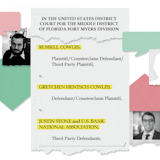Wind Chill Alerts Continue
Wind Chill Advisories and Warnings continue across the state as we head through Saturday Night and, in many areas across central and northern Minnesota, through Tuesday morning. In the Twin Cities, the Wind Chill Advisory is in place through Noon Sunday for wind chills to -35F.
Here's a look at the daily morning wind chill values across the state through Wednesday morning. The coldest readings will be across far northern Minnesota, where both Sunday and Monday morning they could approach -50F.
_______________________________________________
Subzero Highs Across Much Of The State For Sunday
Make sure you bundle up if you're heading out early Sunday morning across the state, as lows will range from about -10F down in southwestern Minnesota to around -30F up in far northern areas of the state.
And temperatures will remain cold throughout the entire day in the Twin Cities. While we will start off in the negative teens, highs will only climb to around -2F during the afternoon hours. Wind chills will be even more brutal, starting off around -30F and only climbing to around -15F in the afternoon. We'll start off sunny, but more clouds than sun are expected during the afternoon.
Sunday should be the coldest day through at least Wednesday across the state, with most areas not making it above zero. Roseau will see a high of only -13F! For areas like Brainerd and Bemidji, these highs will be about 35 degrees below average!
As we look at the Monday through Wednesday period, we should see some very slow, gradual warming temperatures across the state. However, most of the northern half of Minnesota will continue to see highs below zero through at least the middle of the week.
In summary for the Twin Cities, we're still looking at an extended streak of really cold weather. Highs through next Thursday will be at least 20F degrees below average, and the extended forecast shows this continuing into next weekend. While wind chills will be a touch less brutal Monday morning due to reduced winds, most days over the next seven will have a minimum wind chill of at least the -20s.


